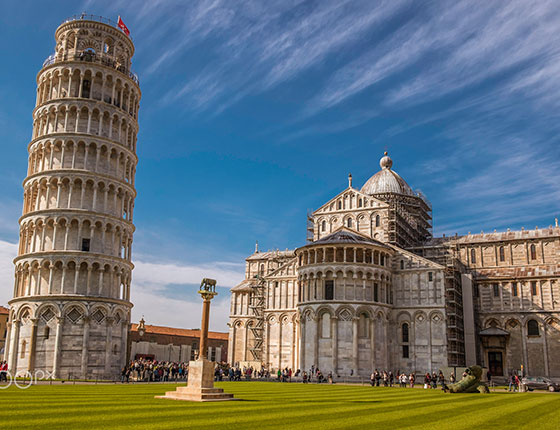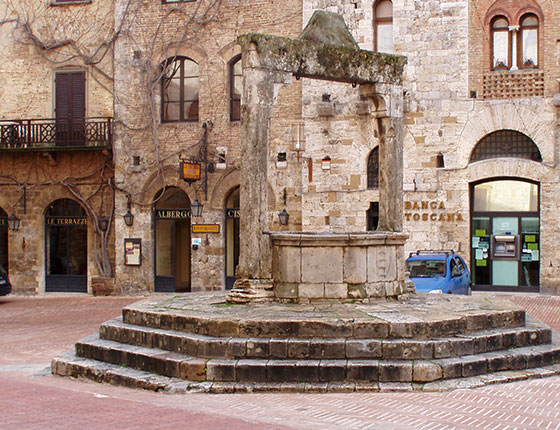CASCIANA TERME
The town is known above all for the thermal plant which uses calcium-sulphurous waters at a constant 37°C. It is said that the thermal water was discovered by Countess Matilde of Canossa.


PISA
The Piazza del Duomo, also known through the poetic expression the square of miracles, is the most important artistic and tourist center of Pisa. Listed among the World Heritage Sites by UNESCO since 1987, you can admire some masterpieces of European Romanesque architecture, that is, the monuments that form the center of the city’s religious life: the cathedral, the baptistery, the cemetery, and the bell tower ( the so-called leaning tower of Pisa).
PISA
The Piazza del Duomo, also known through the poetic expression the square of miracles, is the most important artistic and tourist center of Pisa. Listed among the World Heritage Sites by UNESCO since 1987, you can admire some masterpieces of European Romanesque architecture, that is, the monuments that form the center of the city’s religious life: the cathedral, the baptistery, the cemetery, and the bell tower ( the so-called leaning tower of Pisa).

LUCCA


SAN GIMIGNANO
SAN GIMIGNANO
San Gimignano is above all famous for the medieval towers that still stand out over its panorama, which have earned it the nickname of medieval Manhattan. Of the 72 towers and tower-houses existing in the golden age of the Municipality, twenty-five remained in 1580 and today sixteen remain, with other ruins visible in the urban fabric. The oldest is the Rognosa tower, which is 51 meters high, while the tallest is the Torre del Podestà, also called Torre Grossa, which is 54 meters high. A regulation of 1255 prohibited private individuals from building towers higher than the Rognosa tower, although the two most important families, Ardinghelli and Salvucci, built two slightly lower towers of almost equal size, to demonstrate their power.

LARI
It retains numerous remains of its illustrious past when it was in fact the capital of the Pisan Hills. The city was awarded the Orange Flag, a mark of tourist-environmental quality awarded by the Italian Touring Club to small towns in the Italian hinterland.


PONSACCO
PONSACCO

VOLTERRA

